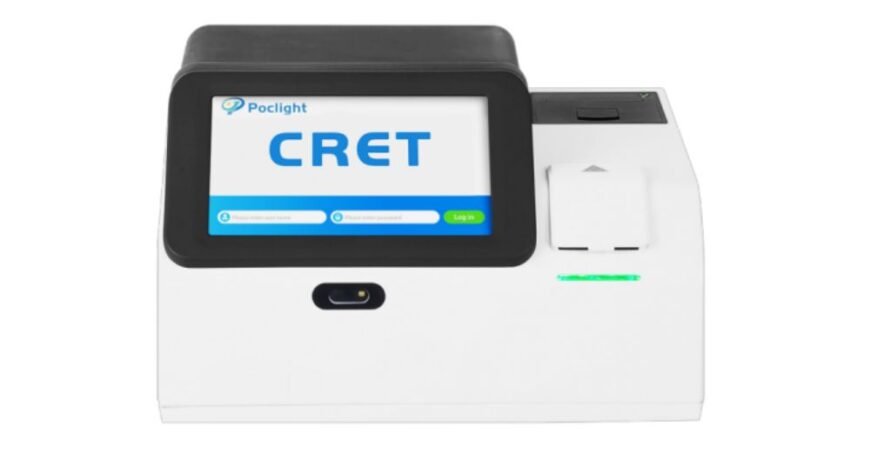Revolutionizing Diagnostics: The Micro Homogeneous Chemiluminescence Immunoassay Analyzer (POCT CLIA Analyzer)
Introduction to POCT CLIA Analyzer
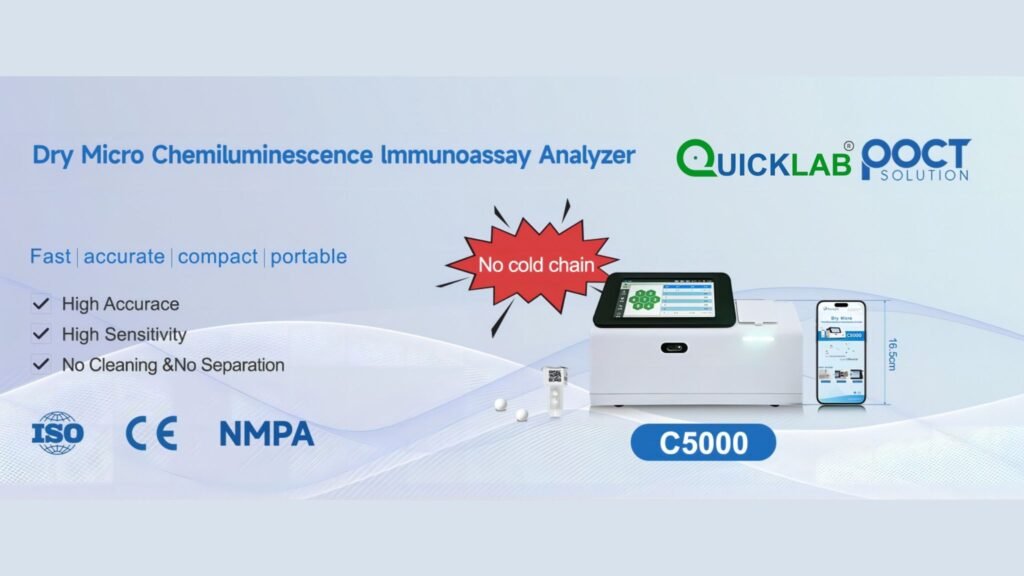
The micro homogeneous chemiluminescence immunoassay analyzer, commonly referred to as the POCT CLIA Analyzer, represents a significant advancement in the field of diagnostic testing within healthcare settings. This innovative device is designed to offer rapid and accurate results for a diverse range of medical conditions, thereby facilitating timely medical interventions. With its ability to conduct point-of-care testing (POCT), the CLIA Analyzer plays a critical role in modern diagnostics, particularly in situations where immediate results are essential for effective patient care.
The primary objective of the POCT CLIA Analyzer is to streamline the diagnostic process. Traditional laboratory testing typically involves multiple steps, resulting in lengthy delays before obtaining results. In contrast, the POCT CLIA Analyzer enables healthcare professionals to perform tests at the patient’s location, reducing the waiting period significantly. This immediacy not only enhances patient satisfaction but also allows clinicians to make quicker decisions regarding treatment plans, ultimately improving patient outcomes.
Understanding Homogeneous Chemiluminescence Technology
Homogeneous chemiluminescence technology is an advanced analytical technique that employs light emission for the detection of biomarkers in various biological samples. This method is fundamentally distinct from traditional immunoassay techniques, characterized by its simpler workflow and enhanced performance metrics. At the core of homogeneous chemiluminescence lies the reaction between an enzyme-labeled analyte and its corresponding substrate, which generates a luminescent signal proportional to the concentration of the analyte.
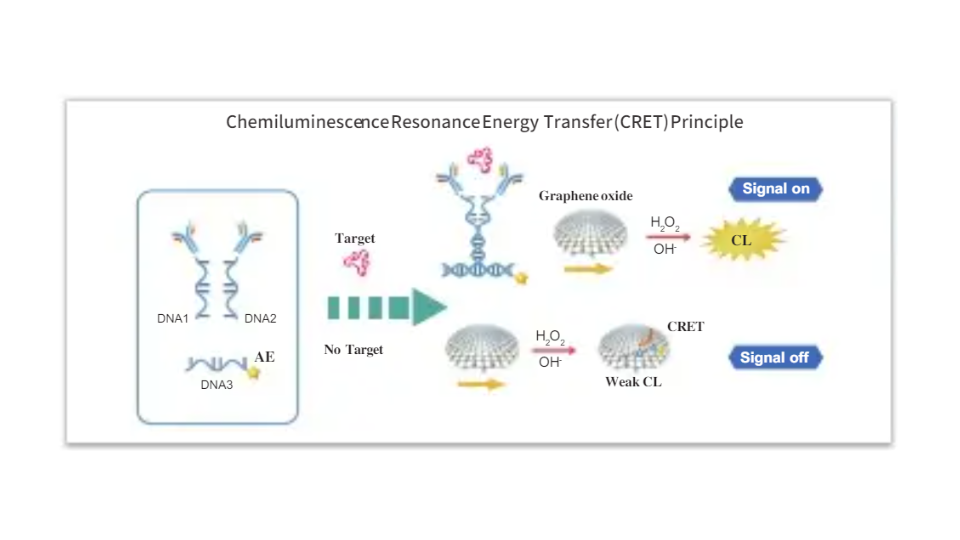
The process begins with a specific immunological reaction where the target biomarker binds to the antibodies present in the assay system. Upon binding, the enzyme attached to the antibody catalyzes a reaction with the chemiluminescent substrate. This results in the generation of light, and the intensity of this light can be quantitatively measured by a photodetector. The beauty of homogeneous systems is their ability to function without the need for separation steps, which are typically required in heterogeneous assays. This not only simplifies the procedure but also decreases the risk of sample contamination and handling errors.
One of the key advantages of using chemiluminescence in immunoassays is its superior sensitivity and specificity. The luminescent signal is often more intense than what is achievable through colorimetric methods, allowing for the detection of lower concentrations of analytes. Additionally, homogeneous chemiluminescence technology minimizes the potential for interference from other components within biological samples, resulting in more reliable outcomes.
Furthermore, the rapid nature of these assays translates to quicker diagnostic results, which is crucial in critical care and point-of-care settings. The combination of enhanced sensitivity, faster turnaround times, and reduced processing complexity makes homogeneous chemiluminescence technology a leading choice for modern diagnostic solutions.
Key Features of the POCT CLIA Analyzer
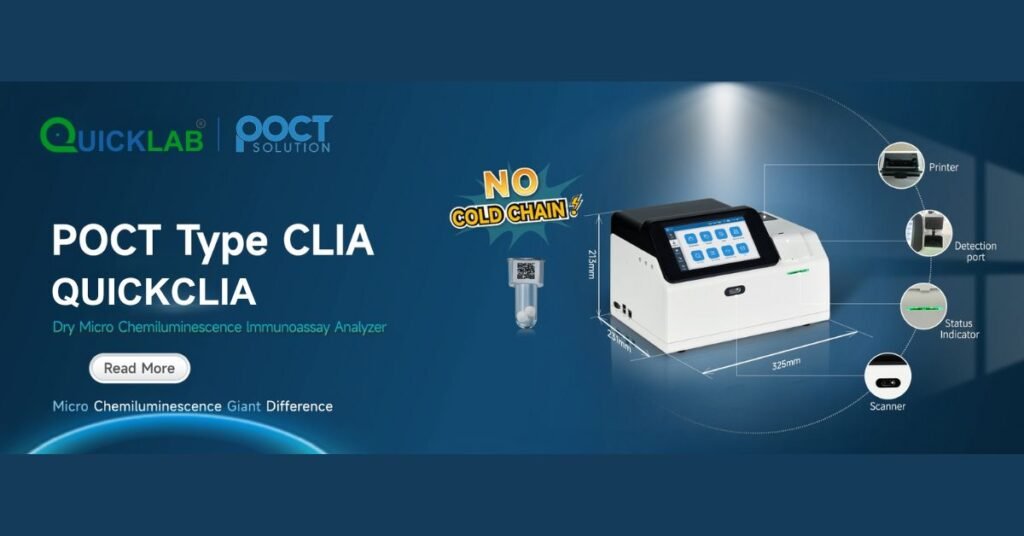
The Micro Homogeneous Chemiluminescence Immunoassay Analyzer, commonly referred to as the POCT CLIA Analyzer, distinguishes itself with several standout features that enhance its performance in clinical diagnostics. One of the most notable attributes is its high sensitivity. This advanced analyzer is capable of detecting low concentrations of analytes, providing reliable and accurate results that are crucial for effective patient management. The high sensitivity of the POCT CLIA Analyzer ensures that even subtle biomarkers can be identified, allowing for early detection of diseases.
Another significant feature of the POCT CLIA Analyzer is its ability to deliver rapid results. In a clinical environment, the speed of obtaining test outcomes can significantly impact patient care. The analyzer reduces the turnaround time for test results, permitting healthcare professionals to make timely decisions regarding diagnosis and treatment plans. This efficiency is particularly beneficial in emergency settings where every second counts.
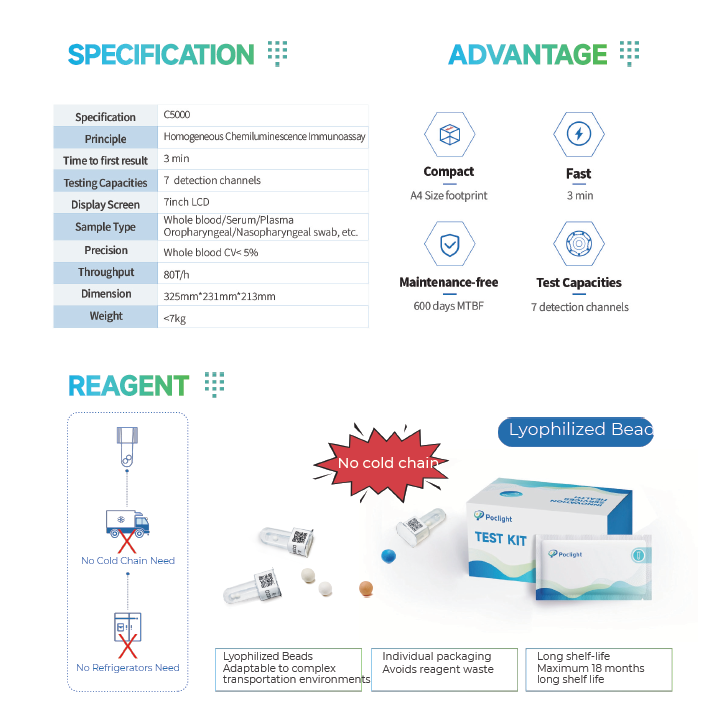

Furthermore, the compact and portable design of the POCT CLIA Analyzer enhances its functionality. Its lightweight structure allows for easy transportation and placement in various clinical settings, including remote areas where healthcare resources may be limited. This portability enables healthcare providers to implement point-of-care testing effectively, making advanced diagnostics accessible outside traditional laboratory settings.
Ease of operation is yet another characteristic that adds to the analyzer’s appeal. The user-friendly interface and streamlined procedures minimize the training time required for healthcare personnel, allowing them to focus on patient care rather than complex operational protocols. Additionally, the cost-effectiveness of the POCT CLIA Analyzer makes it an attractive option for healthcare institutions. By reducing labor costs and improving patient throughput, it presents a financially viable solution without compromising diagnostic quality.
Applications in Healthcare Settings

The Micro Homogeneous Chemiluminescence Immunoassay Analyzer, commonly referred to as the POCT CLIA Analyzer, has emerged as a significant advancement in the field of diagnostics. Its versatile application spans various healthcare settings, making it an indispensable tool for improving diagnostic accuracy and efficiency. This section will delve into the different environments where the POCT CLIA Analyzer is actively utilized.
In clinical laboratories, the POCT CLIA Analyzer enhances routine testing capabilities, allowing for timely analyses of samples. Its high sensitivity and specificity contribute to better patient outcomes by facilitating early detection and monitoring of diseases. Additionally, this analyzer is invaluable in hospitals, where it supports physicians in making rapid decisions that can drastically affect patient care.
Outpatient clinics benefit from the portability and ease of use of the POCT CLIA Analyzer, as it enables healthcare providers to perform on-site tests that were traditionally conducted in more specialized settings. This advantage significantly enhances patient convenience and supports immediate clinical decisions. Furthermore, the relevance of the analyzer is particularly pronounced in emergency rooms, where quick diagnostic results are crucial for triaging and implementing treatment protocols in critical situations.
Intensive care units (ICUs) also see the advantages of the POCT CLIA Analyzer, as it allows for continuous monitoring of patients with rapidly changing health conditions. By providing real-time data on biomarkers, clinicians can make informed decisions regarding treatment adjustments. The importance of this technology extends to remote healthcare services, where accessibility to diagnostic testing may be limited. The POCT CLIA Analyzer empowers healthcare providers in these areas to deliver comprehensive care without the need for extensive laboratory infrastructure.
Overall, the Micro Homogeneous Chemiluminescence Immunoassay Analyzer substantially impacts diagnostic processes across diverse healthcare environments, supporting improved patient care and clinical decision-making.
The Importance of Rapid Diagnostics
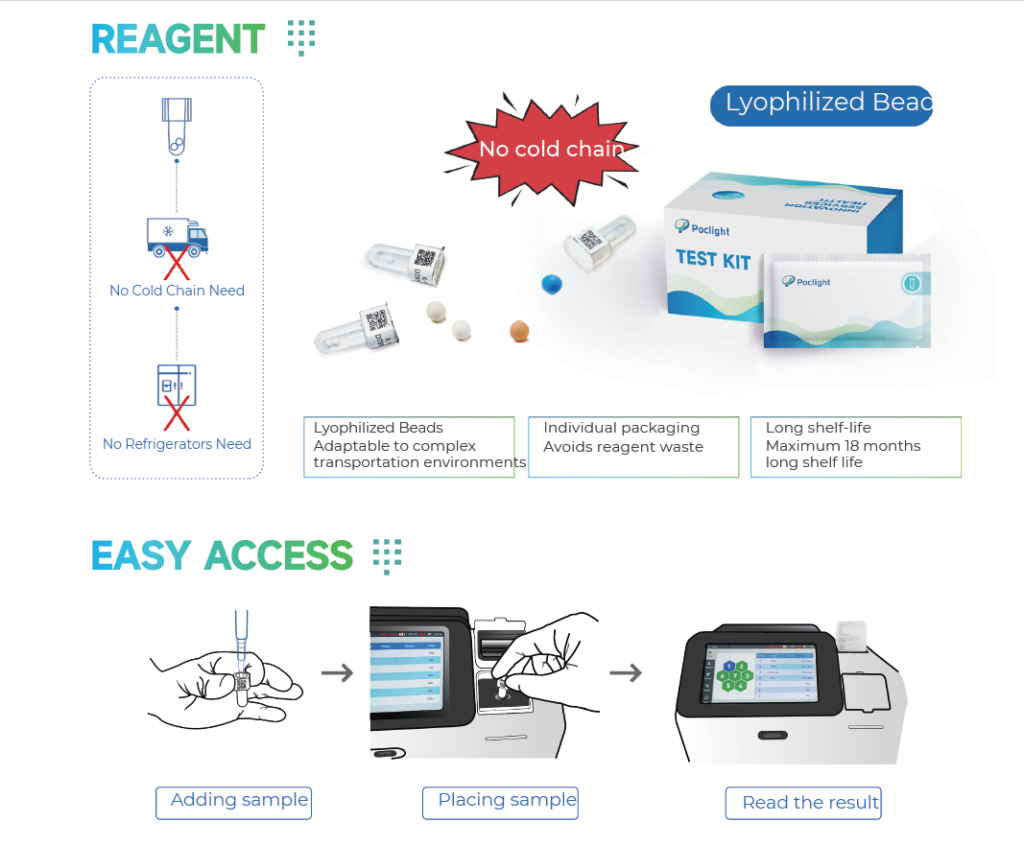
In the rapidly evolving landscape of healthcare, the significance of rapid diagnostics cannot be overstated. Timely test results are paramount in clinical decision-making and patient management, as they enable healthcare professionals to formulate effective treatment plans without unnecessary delays. For instance, in emergency situations where every second counts—such as cases involving trauma, heart attacks, or severe infections—prompt diagnostic results are crucial for immediate intervention. In these scenarios, the ability to quickly ascertain the patient’s condition can significantly influence clinical outcomes and enhance survival rates.
The Micro Homogeneous Chemiluminescence Immunoassay Analyzer (POCT CLIA Analyzer) exemplifies the advancements that have made rapid diagnostics more accessible in various healthcare settings. This innovative device allows for point-of-care testing, meaning that tests can be conducted at the location where the patient is receiving care, rather than requiring them to wait for results from a centralized laboratory. This immediate access to diagnostic information ensures that healthcare providers can act swiftly, leading to increased efficiency in patient management.
Moreover, utilizing rapid diagnostic tools can enhance the overall patient experience. When patients receive quick test results, it not only alleviates anxiety but also fosters a sense of trust in the healthcare system. The implications of rapid diagnostics extend beyond emergency care; they are equally vital in managing chronic conditions where monitoring and timely adjustments to treatment regimens can significantly improve patient outcomes. The POCT CLIA Analyzer, with its ability to provide immediate results, empowers clinicians to make informed decisions in real time, thus optimizing patient care and resource utilization.
In conclusion, the ability to deliver rapid diagnostic results is an integral component of modern healthcare, playing a pivotal role in patient safety and treatment efficacy. The POCT CLIA Analyzer stands at the forefront of this transformation, underscoring the importance of speed in diagnostics, particularly in critical care scenarios.
User-Friendly Operations and Maintenance
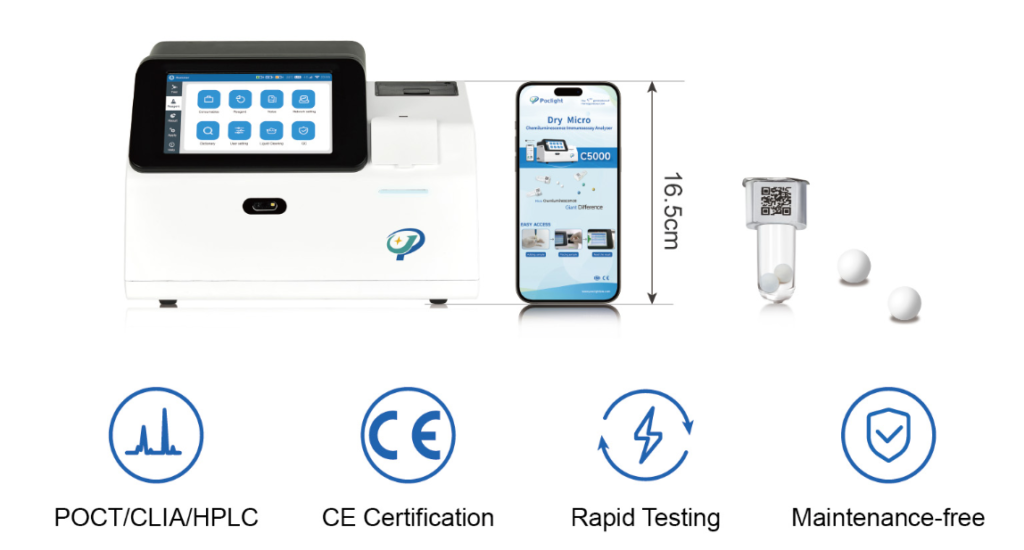
The Micro Homogeneous Chemiluminescence Immunoassay Analyzer, commonly referred to as the POCT CLIA Analyzer, has been specifically designed to streamline the diagnostic process in healthcare settings. One of its key attributes is its intuitive interface, which allows healthcare professionals to engage with the system effectively without requiring extensive training. The user-friendly design includes clear icons, straightforward navigation menus, and step-by-step guided procedures that enhance the overall ease of operation.
Healthcare professionals can quickly familiarize themselves with the analyzer, allowing for efficient testing workflows in various clinical environments. The setup and procedure of running assays are simplified to enable users to conduct tests with minimal oversight, thereby reducing the burden of operational complexity. For example, the analyzer utilizes automated calibration and quality control checks, which further alleviate the need for manual interventions, thus enhancing user confidence and efficiency.
Moreover, the POCT CLIA Analyzer has been engineered with maintenance in mind. Its construction facilitates easy access to essential components, ensuring that routine maintenance tasks can be performed without requiring specialized tools or equipment. The maintenance procedures are designed to be straightforward, encompassing tasks such as reagent replacement, cleaning, and system updates. These procedures can typically be performed by the healthcare professionals who utilize the analyzer daily, promoting a sense of accountability and stewardship regarding equipment integrity.
Importantly, the operational and maintenance protocols associated with this analyzer translate into low upkeep costs for healthcare facilities. With effective user engagement and minimal maintenance intricacies, healthcare providers can maintain optimal functionality, ensuring that the analyzer continues to deliver accurate and timely diagnostic results. Overall, the user-centric attributes of the POCT CLIA Analyzer not only enhance operational efficiency but also foster an environment of effective and reliable diagnostic management.
Cost-Effectiveness of the POCT CLIA Analyzer
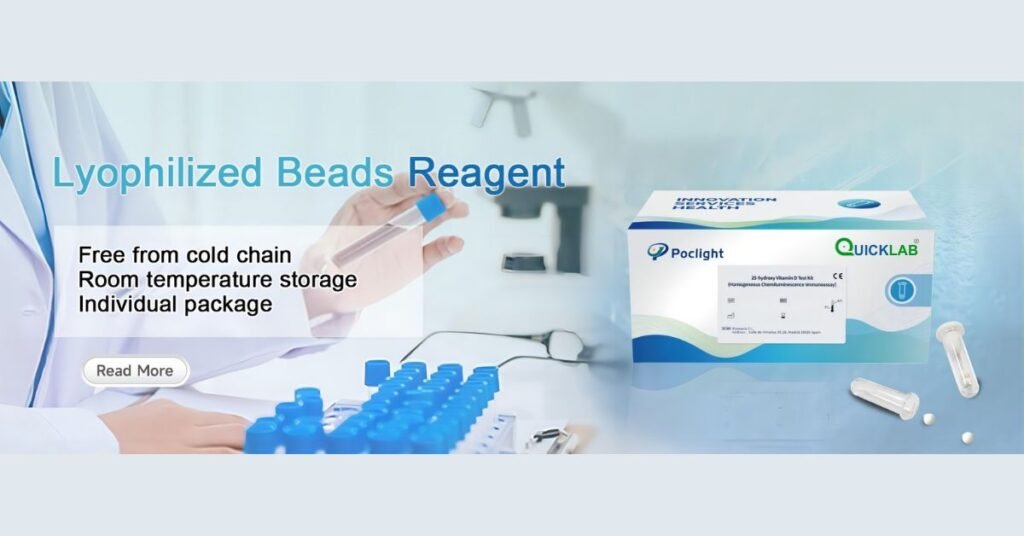
The adoption of the Micro Homogeneous Chemiluminescence Immunoassay Analyzer, commonly referred to as the POCT CLIA Analyzer, is increasingly being recognized for its potential cost-effectiveness in various healthcare settings. Initial investment costs are a considerable factor when evaluating diagnostic tools; however, the POCT CLIA Analyzer presents a compelling case. While it may require a significant upfront investment compared to traditional diagnostic methods, the long-term financial implications highlight a more favorable picture. This is attributed to its efficiency and accuracy, reducing the costs associated with misdiagnoses and unnecessary follow-up testing.
In terms of ongoing operational expenses, the cost of consumables and maintenance must be accounted for. The POCT CLIA Analyzer typically uses less reagent per test than many of its competitors, thereby reducing recurring costs. Moreover, its automated features minimize the need for extensive laboratory personnel, translating into savings on labor costs and minimizing the risk of human error. Healthcare facilities can experience decreased turnaround times, which not only enhances patient satisfaction but also allows more efficient use of resources.
Furthermore, the capabilities of the POCT CLIA Analyzer can potentially lead to improved patient outcomes, which can indirectly reduce healthcare costs. By facilitating rapid diagnostic results, healthcare providers can initiate timely treatment plans, reducing hospital stays and the need for expensive interventions associated with delayed diagnoses. Overall, the financial advantages of the POCT CLIA Analyzer include both direct cost savings and the added value of improved clinical efficiency. As the healthcare landscape increasingly shifts toward value-based care, the cost-effectiveness of such advanced diagnostic tools will likely play a crucial role in resource allocation decisions across various healthcare facilities.
Case Studies and Success Stories
The Micro Homogeneous Chemiluminescence Immunoassay Analyzer (POCT CLIA Analyzer) has demonstrated remarkable efficacy in various healthcare settings, as evidenced by several noteworthy case studies. These real-world examples showcase how the analyzer significantly enhances diagnostic accuracy, expedites results, and ultimately improves patient outcomes.
One such case involved an emergency department in a metropolitan hospital, where time-sensitive diagnostic results are crucial for patient management. The implementation of the POCT CLIA Analyzer allowed for real-time testing of biomarkers relevant to cardiac events. In this instance, the analyzer successfully reduced the average turnaround time for troponin tests from over an hour to approximately 15 minutes, empowering physicians to make swift clinical decisions. As a result, patients received timely interventions, which positively impacted clinical outcomes and reduced length of stay.
Another compelling case study took place in a rural healthcare clinic where laboratory resources were limited. By integrating the POCT CLIA Analyzer, clinicians could conduct various immunoassays onsite, eliminating the need for patients to travel long distances for laboratory testing. This capability not only increased patient retention but also minimized delays in diagnosis and treatment. In this scenario, the increased accessibility to point-of-care testing demonstrated substantial improvements in the management of chronic diseases, such as diabetes, where timely intervention can significantly alter disease trajectories.
Moreover, a large-scale implementation of the POCT CLIA Analyzer at a community health system highlighted its versatility across a range of assays, including infectious disease markers and hormonal tests. This initiative led to improved screening rates and better identification of asymptomatic infections, ultimately facilitating early treatment. The feedback from healthcare professionals indicated high satisfaction with the analyzer’s performance, noting its ease of use and reliability in generating accurate results. These success stories collectively emphasize the transformative potential of the POCT CLIA Analyzer in advancing diagnostics within diverse healthcare environments.
Future Directions and Innovations
The potential for the Micro Homogeneous Chemiluminescence Immunoassay Analyzer (POCT CLIA Analyzer) to transform the diagnostic landscape is vast, particularly as ongoing advancements in chemiluminescence technology continue to unfold. One promising future direction involves improving the sensitivity and specificity of assays, which could yield more accurate and reliable results in various diagnostic applications. Innovations in assay design and reagent chemistry are likely to drive these enhancements, allowing detection of even trace levels of biomarkers prevalent in conditions like infectious diseases or chronic conditions.
Another area ripe for innovation lies in the scalability of the POCT CLIA Analyzer. As healthcare systems worldwide face increasing demands for rapid and efficient diagnostics, integrating automation and artificial intelligence could optimize workflow and result interpretation. Enhanced data analytics capabilities may allow for real-time monitoring and decision-making support, empowering physicians to provide timely interventions based on superior diagnostic information.
Moreover, the application of microfluidics within the POCT CLIA platform could pave the way for portable and user-friendly devices. These innovations could democratize access to advanced diagnostic technologies, making point-of-care testing feasible even in resource-limited settings. With the increasing prevalence of personalized medicine, future iterations of the CLIA Analyzer may also focus on tailored diagnostics, enabling practitioners to customize treatment plans based on individual biomarker profiles.
As we look ahead, the fusion of chemiluminescence technology with emerging fields, such as genomics and proteomics, may create additional opportunities for the POCT CLIA Analyzer. This integration has the potential to extend beyond conventional applications, addressing complex health issues in areas like oncology and autoimmune disorders. Thus, the evolution of this technology promises not only to enhance diagnostic practices but also to significantly contribute to the overall quality of patient care.


